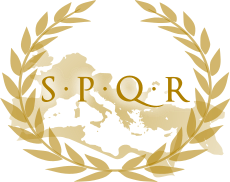 |
| Part of a series on |
| Ancient Rome and the fall of the Republic |
|---|
|
People
Events
Places |

In Imperial Rome, Cura Annonae ("care of Annona") was the import and distribution of grain to the residents of the cities of Rome and, after its foundation, Constantinople. The term was used in honour of the goddess Annona. The city of Rome imported all the grain consumed by its population, estimated to number 1,000,000 by the 2nd century AD. This included recipients of the grain dole or corn dole,[a] a government program which gave out subsidized grain, then free grain, and later bread, to about 200,000 of Rome's adult male citizens.[b] Rome's grain subsidies were originally ad hoc emergency measures taken to import cheap grain from trading partners and allies at times of scarcity, to help feed growing numbers of indebted and dispossessed citizen-farmers. By the end of the Republic, grain subsidies and doles had become permanent, uniquely Roman institutions. The grain dole was reluctantly adopted by Augustus and later emperors as a free monthly issue to those who qualified to receive it. In 22 AD, Augustus' successor Tiberius publicly acknowledged the Cura Annonae as a personal and imperial duty, which if neglected would cause "the utter ruin of the state".[1]
During the Imperial Era, a regular and predictable supply of subsidised grain, the grain dole, and sumptuous public games such as gladiator contests and chariot racing earned the obedience of potentially restive lower-class urban citizens, providing what the poet Juvenal sarcastically summed up as "bread and circuses". Sufficient imports of grain to meet the basic requirements of cities relied on dependable surpluses elsewhere, and minimal grain-hoarding by speculators. The logistics of moving the grain by sea to Rome required the state's commission of many hundreds of privately owned merchant ships, some very large, and a system for collecting and distributing the grain at its destination. Most of Rome's grain supply was grown, imported, stored and traded as a profitable commodity, funded by speculators and hoarders, using loans, not state subsidies.[2] Some provinces were almost entirely given over to the production of grain for consumption in Roman cities. The most important sources of bread grain, mostly durum wheat, were Roman Egypt, North Africa (21st century Libya, Tunisia, Algeria, and Morocco), and Sicily. When the Vandals took over most of these provinces (c. 439), the Western Roman Empire lost the greater part of its grain supply.
Some form of Cura Annonae may have persisted as late as the 6th century for Rome, but far less grain was shipped compared to earlier periods; in Constantinople, capital of the Eastern Roman Empire, it lasted as late as the 7th century, in reduced form. The population of the city of Rome declined precipitously during the last years of the Western Roman Empire. Thereafter, no city in Europe would assemble the transportation network required to feed 1,000,000 inhabitants until the 19th century.
Cite error: There are <ref group=lower-alpha> tags or {{efn}} templates on this page, but the references will not show without a {{reflist|group=lower-alpha}} template or {{notelist}} template (see the help page).
- ^ Rickman, G.E. (1980). "The Grain Trade Under the Roman Empire". Memoirs of the American Academy in Rome. 36: 263. doi:10.2307/4238709. JSTOR 4238709.. Downloaded from JSTOR.
- ^ Casson, Lionel. “The Role of the State in Rome’s Grain Trade.” Memoirs of the American Academy in Rome, vol. 36, 1980, pp. 21–33. JSTOR, https://doi.org/10.2307/4238693. Accessed 26 Jun. 2022.